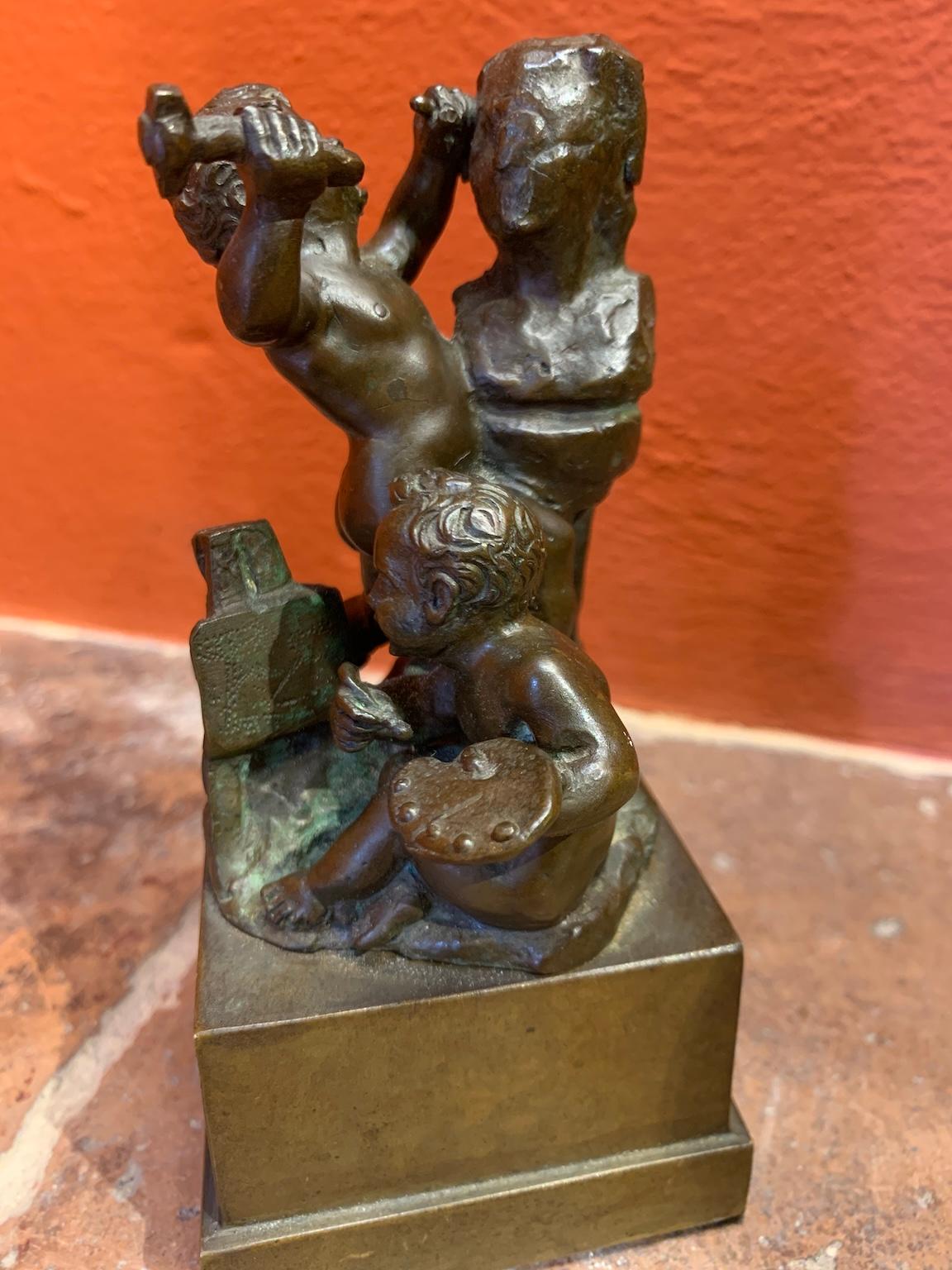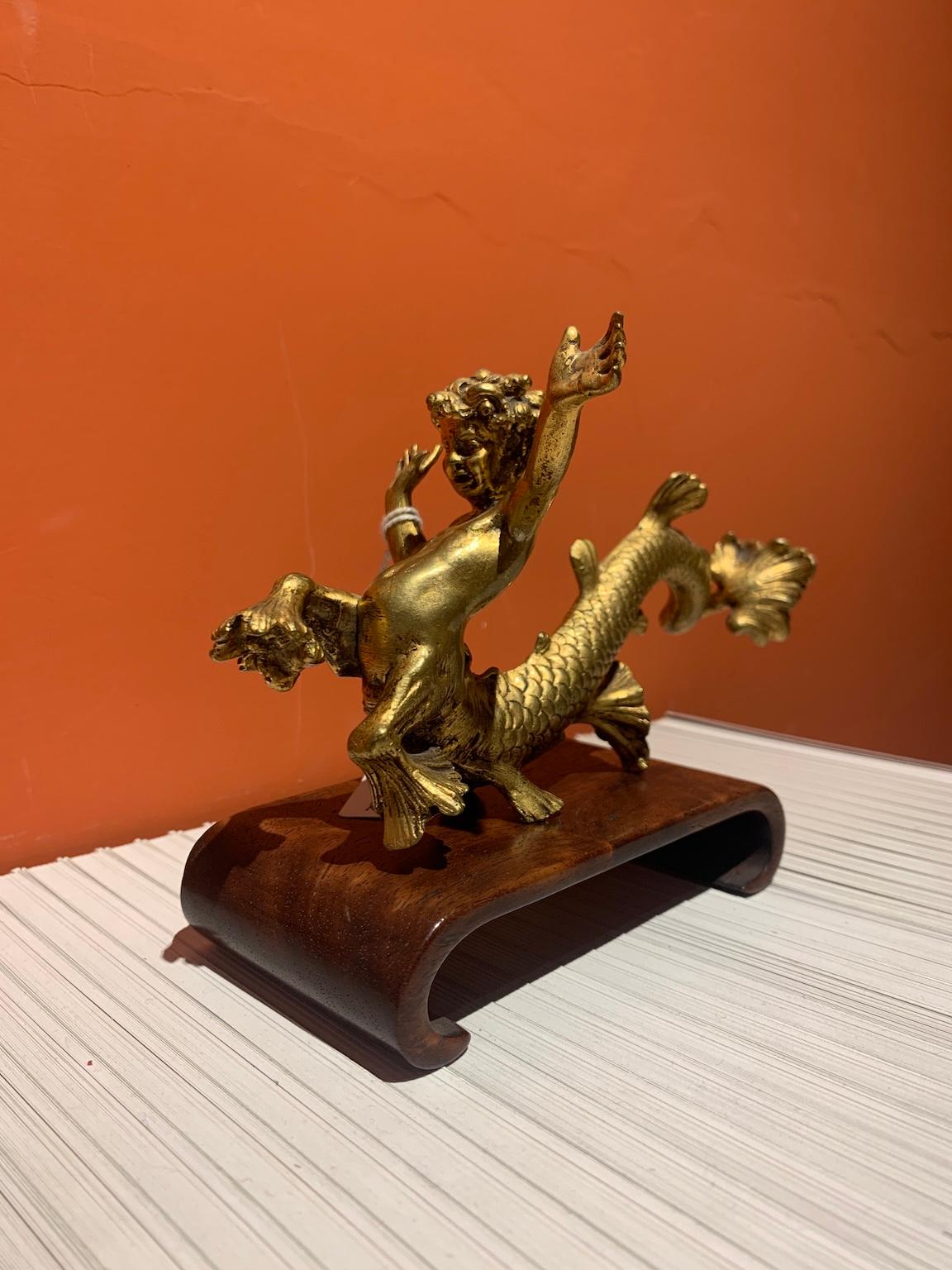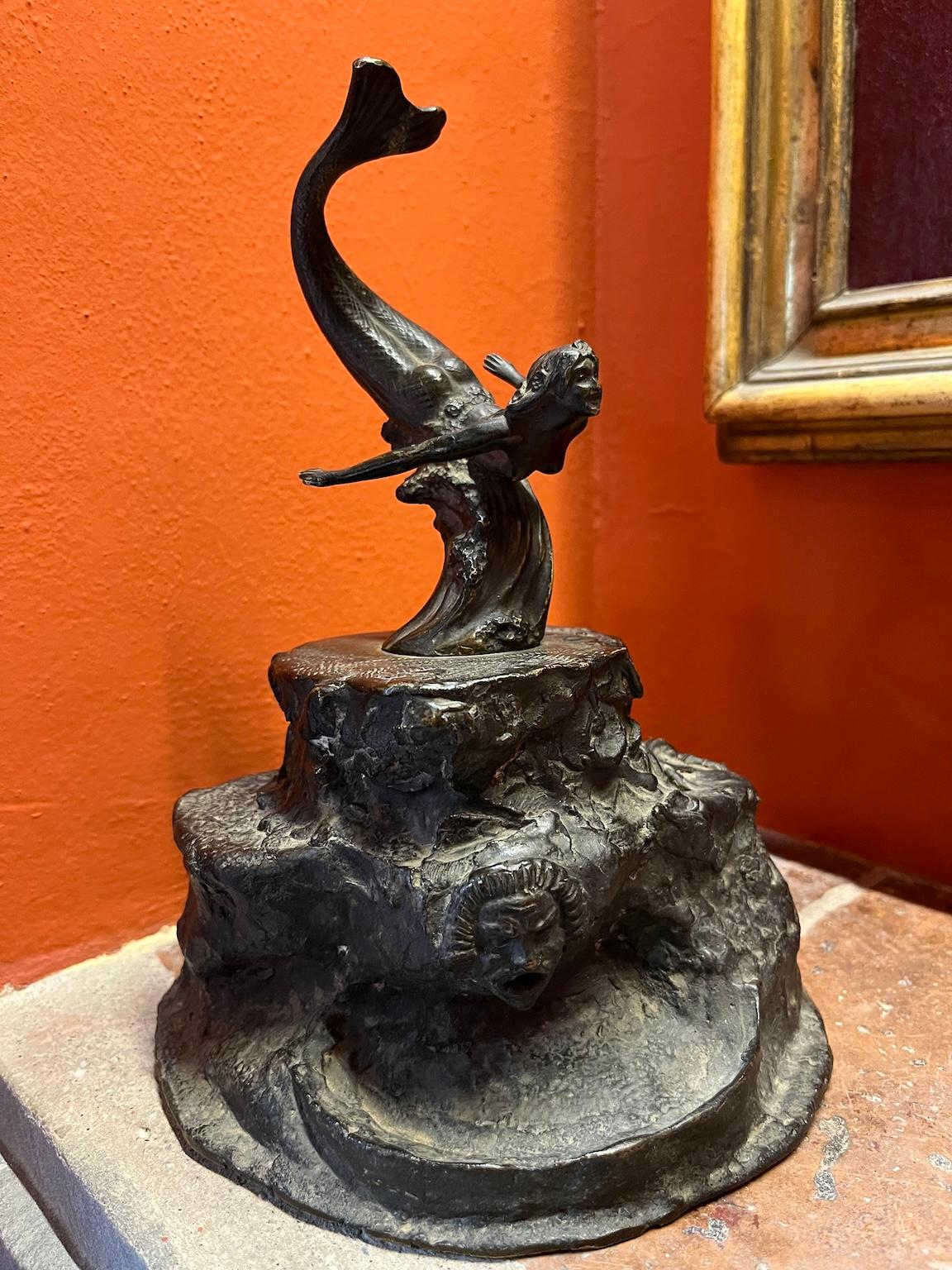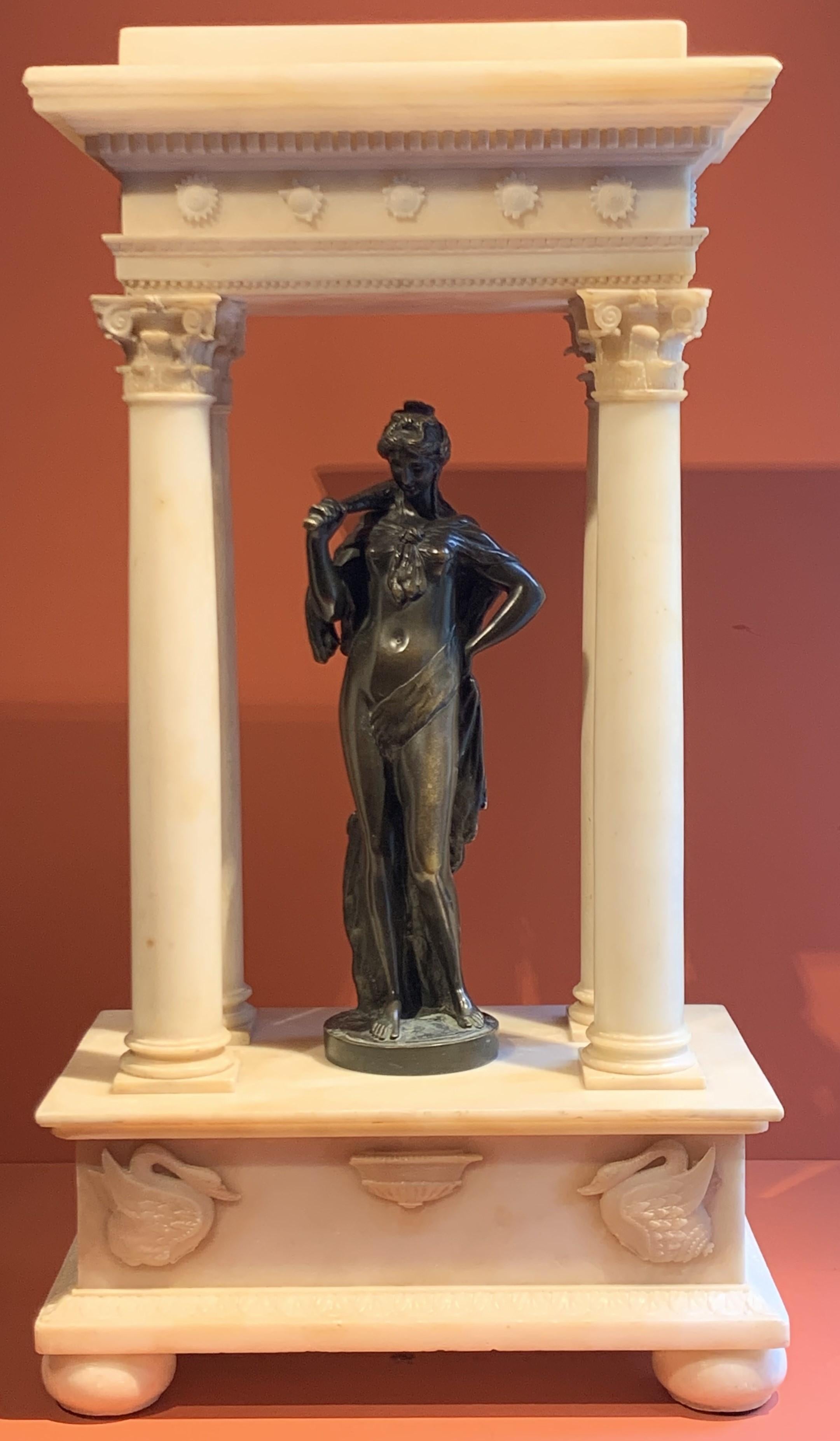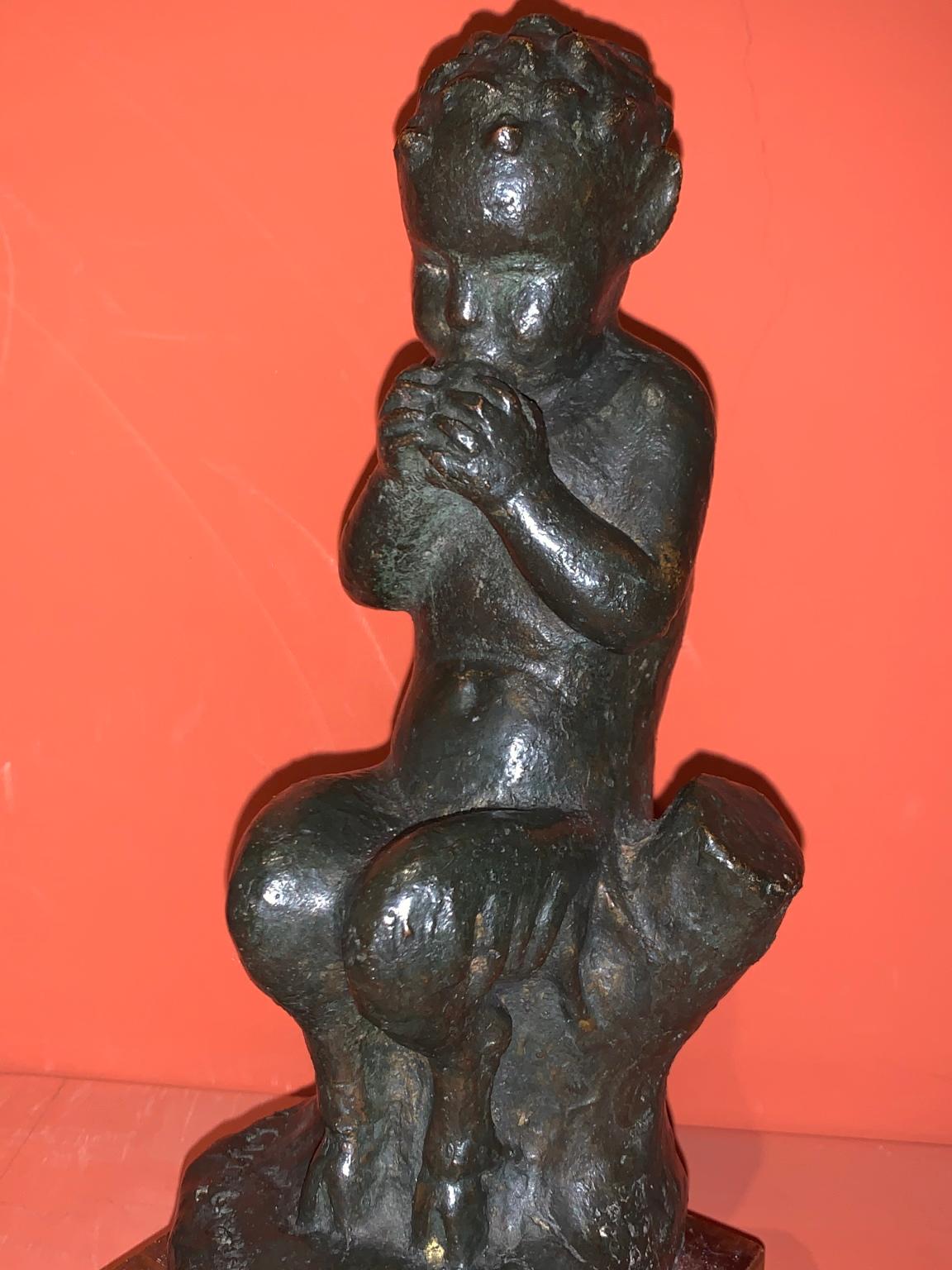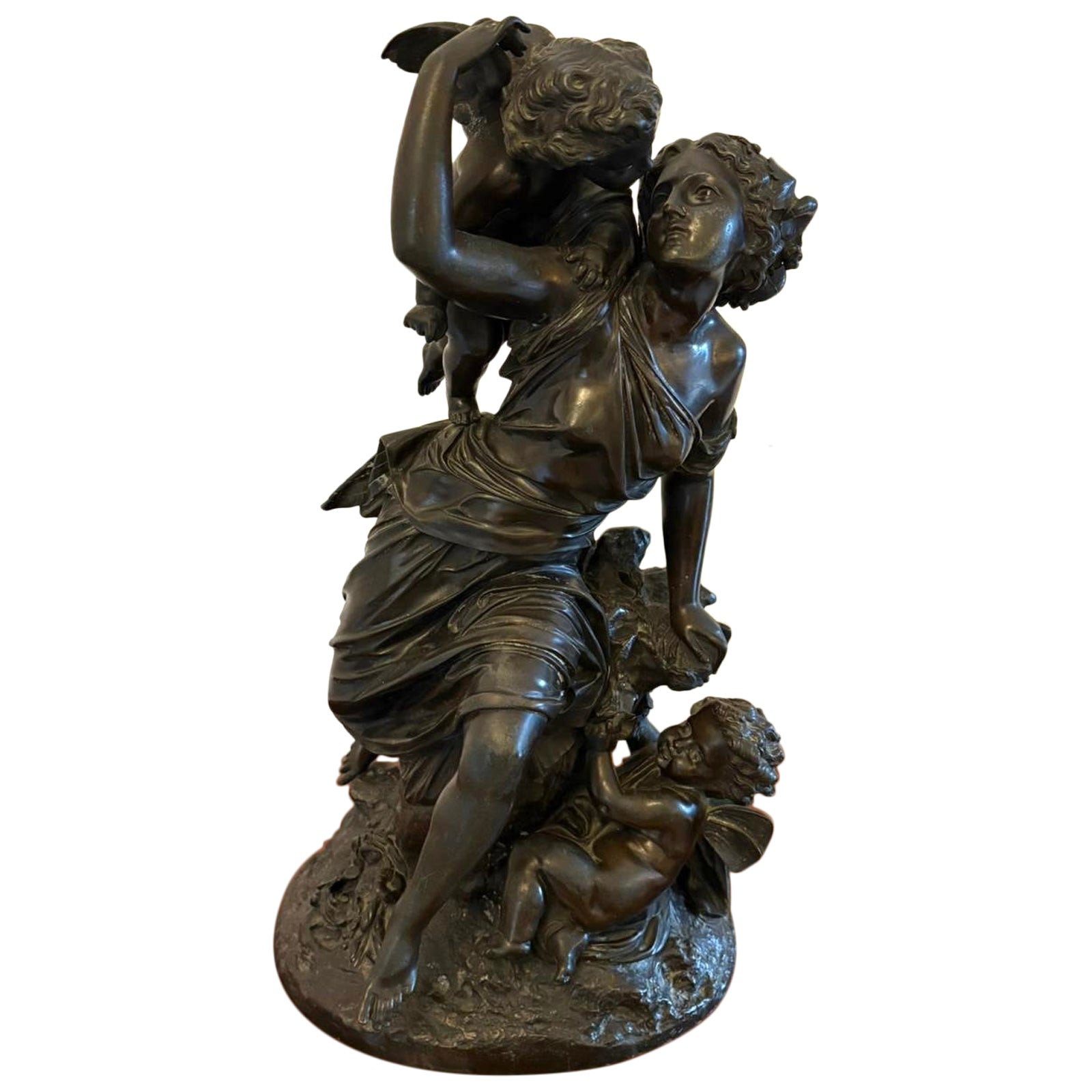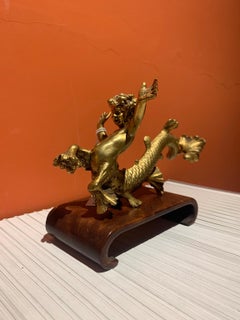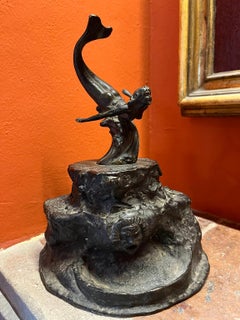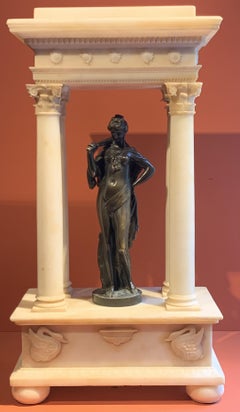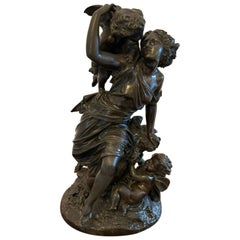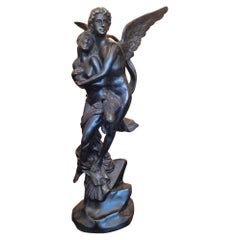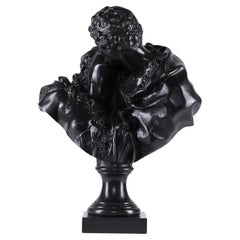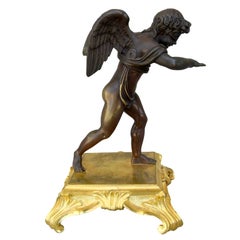Items Similar to Allegorical mythological figurative bronze from the 19th century
Video Loading
Want more images or videos?
Request additional images or videos from the seller
1 of 7
UnknownAllegorical mythological figurative bronze from the 19th century19thC
19thC
$1,772.40
£1,348.83
€1,500
CA$2,481.08
A$2,733.95
CHF 1,418.06
MX$32,516.71
NOK 17,938.01
SEK 16,804.12
DKK 11,426.80
About the Item
Marble-based bronze statuette depicting Cupid, holding an arrow in his hand, walking caressing a lion's mane, lowered in the act of affectionately licking his little foot. The subject is an allegory of love conquering all, dominating and defeating force.
These types of desk objects became a very common production in Europe between the eighteenth and nineteenth centuries, designed primarily as souvenirs of grand tour travels.
- Creation Year:19thC
- Dimensions:Height: 5.12 in (13 cm)Width: 6.3 in (16 cm)Depth: 3.15 in (8 cm)
- Medium:
- Movement & Style:
- Period:
- Condition:
- Gallery Location:Florence, IT
- Reference Number:1stDibs: LU1240214367032
About the Seller
5.0
Vetted Professional Seller
Every seller passes strict standards for authenticity and reliability
Established in 1958
1stDibs seller since 2019
31 sales on 1stDibs
Typical response time: 5 hours
- ShippingRetrieving quote...Shipping from: Florence, Italy
- Return Policy
More From This Seller
View AllBronzetto italiano figurativo allegorico della fine del XIX secolo
Located in Florence, IT
Bronzetto firmato alla base F. de Luca, artista meridionale attivo fra XIX e XX secolo, raffigurante un'allegoria delle Arti.
In secondo piano, la "Scultura", identificata da un put...
Category
Late 19th Century Other Art Style Figurative Sculptures
Materials
Bronze
Figurative mythological bronze statuette in Florentine Mannerist style of the 19th century
Located in Florence, IT
Small gilt bronze objet d'art on wooden base depicting a young sea creature, most likely a newt.
These types of objects were very common in aristocratic homes, often kept in the lord...
Category
Early 20th Century Other Art Style Figurative Sculptures
Materials
Bronze
Figurative bronze with a literary mythological theme from the early twentieth century
Located in Florence, IT
Early 20th-century Art Nouveau decorative bronze depicting a smiling mermaid carried by a wave above a fountain with a mask.
The reference is to the fairy tale by writer Hans Christ...
Category
Early 20th Century Art Nouveau Nude Sculptures
Materials
Bronze
Alabaster temple with mythological figurative bronze figure from the 19th century
Located in Florence, IT
Alabaster temple with Corinthian capitals, palmette decoration runs along the rim. On the front, two swans are carved on the base, while there are five rosettes at the top.
In the ce...
Category
Early 19th Century Romantic Figurative Sculptures
Materials
Alabaster, Bronze
Italian Mannerist style Italian mythological figurative bronze statuette of the 20th century
Located in Florence, IT
The small bronze depicts a small seated faun, immortalized while playing a wind instrument as can be clearly seen by the puffy cheeks. is signed at the base R. Castagnino and is from...
Category
1930s Mannerist Figurative Sculptures
Materials
Bronze
Terracotta figurativa italiana a tema mitologico dei primi del Novecento
Located in Florence, IT
Piccola terracotta a soggetto mitologico firmata sul retro sulla base "Zambini", che per la grafia (in particolare la Z che ricorda una F) permette di identificar...
Category
Early 20th Century Renaissance Nude Sculptures
Materials
Terracotta
You May Also Like
Superb 19th Century Bronze Sculpture by Renowned French Sculptor Auguste Moreau
By Auguste Moreau
Located in Suffolk, GB
Superb 19th century bronze sculpture by Auguste Moreau depicting a classical female figure surrounded by playful cherubs. The woman draped in flowing robes looks upward with a joyful...
Category
Antique 19th Century French Figurative Sculptures
Materials
Bronze
19th Century, Bronze Lovers
Located in Dallas, TX
Intricate lovers in bronze statue. From the late 18th century. This piece stands at 23 in high 7 inches wide. Perfect addition for your study or reading room.
Category
Antique Early 19th Century European Baroque Figurative Sculptures
Materials
Bronze
$3,200 Sale Price
20% Off
Brass Cast Statue to Convey Love
Located in Warsaw, PL
This figure is made of bronze with brown patina and representing a couple embracing and kissing each other.This scene was immortalized by Jean-Antoine Houdon.French sculptor whose religious and mythological works are definitive expressions of the 18th-century Rococo style of sculpture. Elements of classicism and naturalism are also evident in his work, and the vividness with which he expressed both physiognomy and character places him among history’s greatest portrait sculptors.Houdon began sculpting at age nine and underwent the long training prescribed by the Académie Royale. In 1761 he won the Prix de Rome, and while in Rome (1764–68) he established his reputation with a large marble statue...
Category
20th Century French Other Busts
Materials
Bronze
$3,308 Sale Price
20% Off
Blind Love Bronze, XIXth Century
Located in Marseille, FR
Nineteenth-century bronze blind love symbolized by a cupid looking like a day blind man with a brown patina on a gilded bronze base. note a difference in patina between the upper par...
Category
Antique 19th Century Figurative Sculptures
Materials
Bronze
Cesare Lapini
Located in New York, NY
A pair of Italian alabaster busts of Amorini
By Galleria Lapini, Florence, Late 19th Century
One inscribed to the reverse C. Lapini, Firenze...
Category
Antique Mid-19th Century Italian Victorian Busts
Materials
Alabaster
$15,000
French 19th Century Art Scholar Statue
Located in Southall, GB
A beautifully refined bronze statue depicting an art scholar teaching two young cherubs. It has been finished with a patina for developing glossy sheen with age. Mounted on an oval b...
Category
Antique Mid-19th Century Figurative Sculptures
Materials
Bronze
$1,340 Sale Price
20% Off
